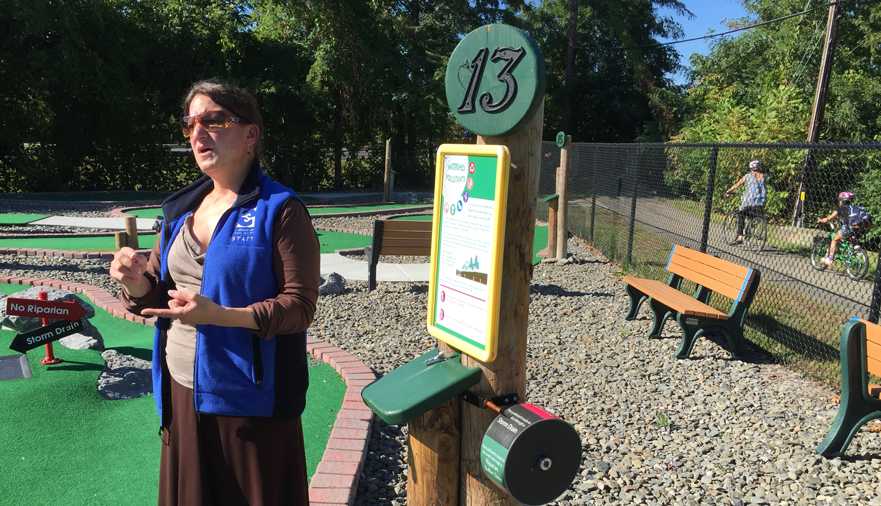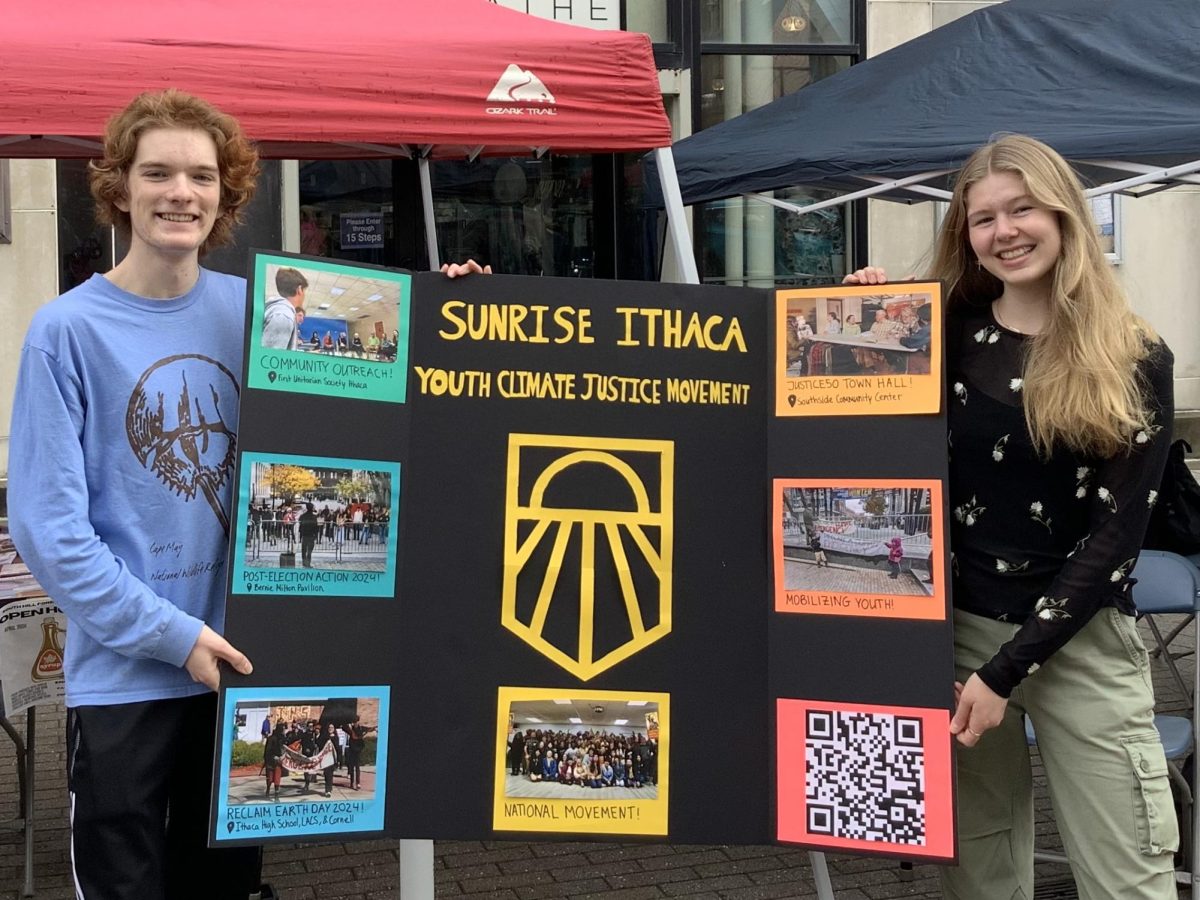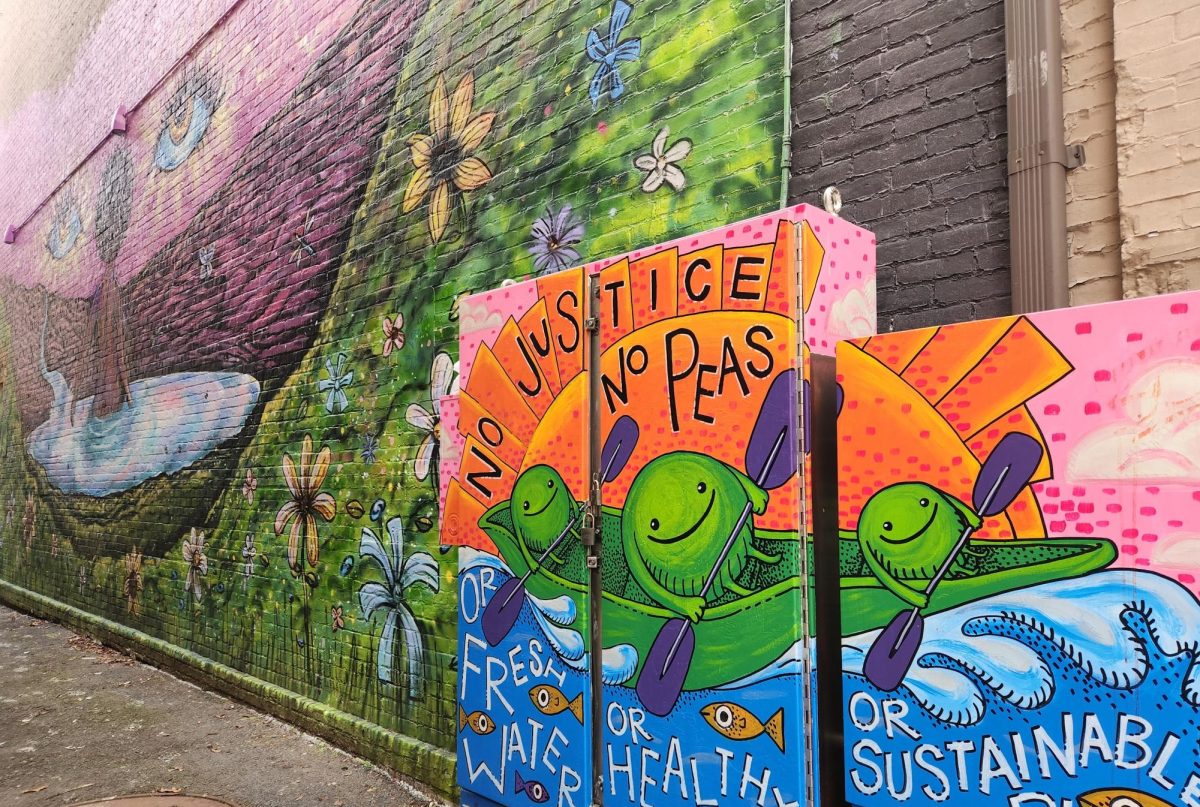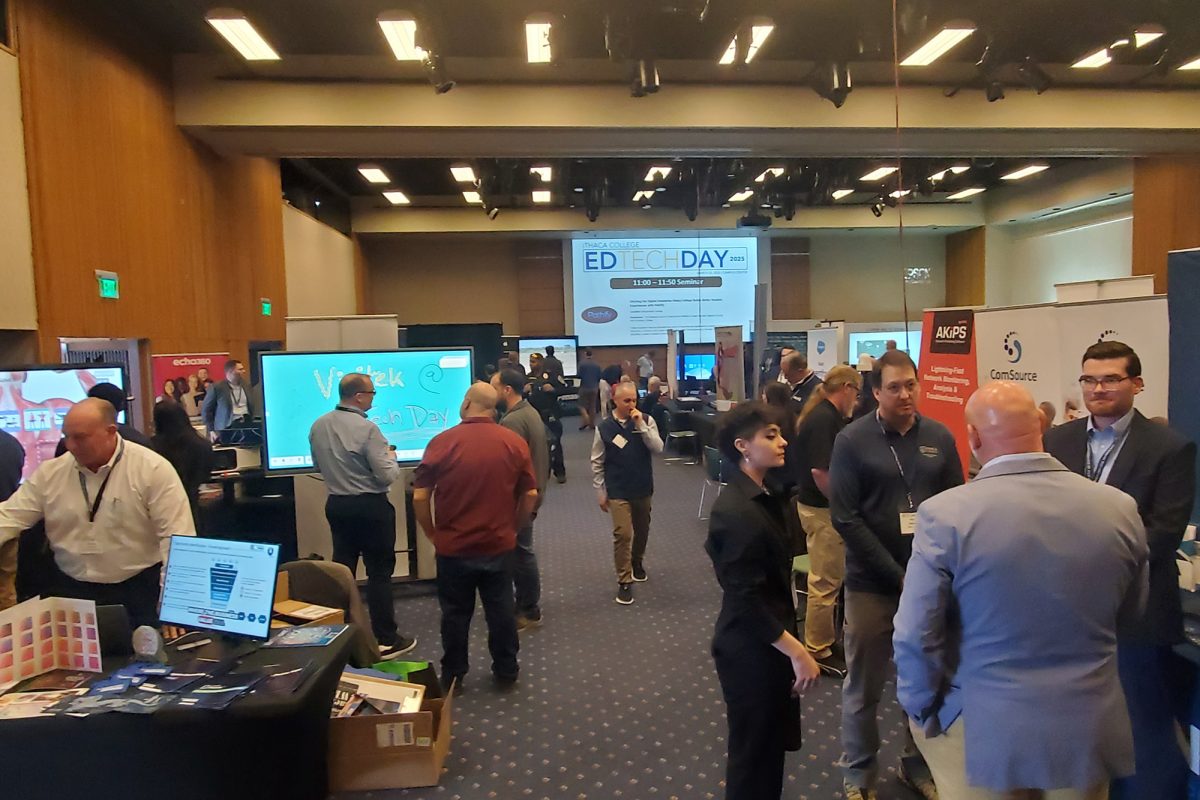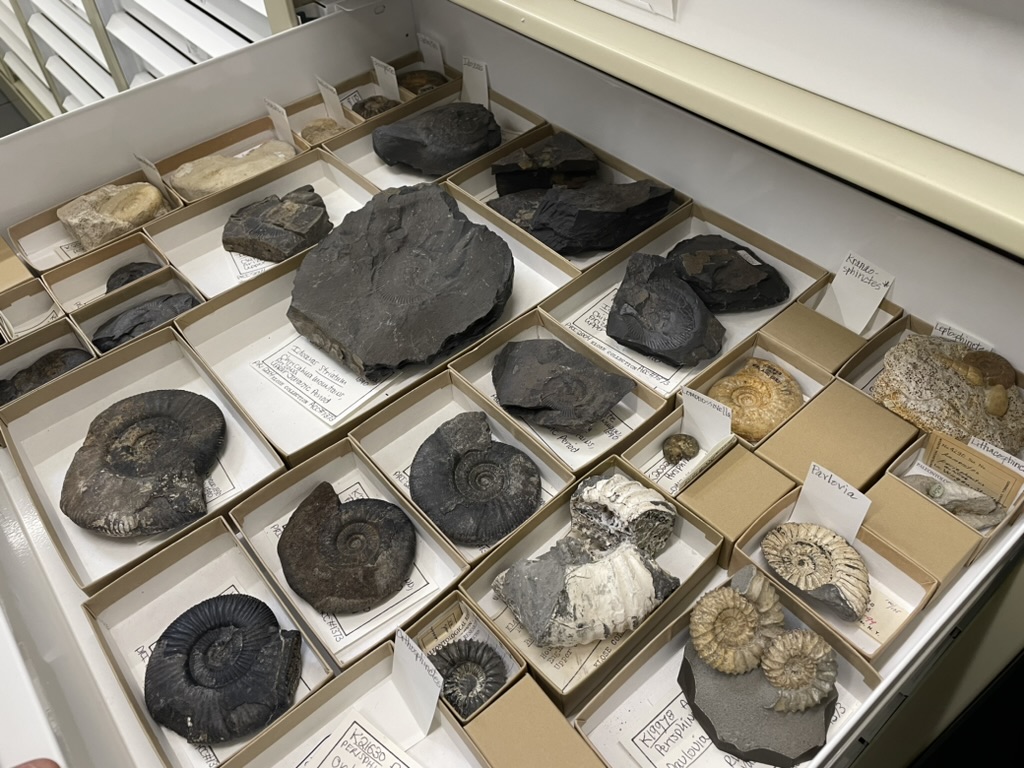This interactive exhibit was created with access for all, as the course is fully wheelchair accessible and features Americans with Disabilities Act approved golf clubs. The Sciencenter looks to use the new course to add to its ongoing campaign: “Curious. Confident. Inspired.”
“Our course is unique in that each hole has something interactive and that makes it really fun,” said Donna DiBartolomeo, the Sciencenter’s Director of Exhibits.
The main concept of the course is that each individual hole will be based on a scientific theme, with topics such as physics, engineering and astronomy.
The course starts off very simple on the first hole, with a clear path to the cup that is designed to show people how Newton’s Laws of motion work. However, as you advance throughout the course, the holes become more complex.
One example of a more interactive exhibit is hole number 13. There, golfers have the opportunity to learn about pollutants by spinning a wheel near the start of the hole. The wheel directs the player to which path they have to take to hit the ball in the hole. Since each path represents a different method of water draining, players can learn which concept works best for keeping the pollutant — the ball — on the most environmentally-friendly path.
Julian Pompilio, the Exhibit Fabricator at the Sciencenter, mentioned that while the primary goal of the mini-golf course is to increase interest in science, the course is supposed to be a fun activity for patrons.
“Our mission is to inspire excitement for science through interactive exhibits and programs,” Pompilio said. “That said, we really wanted to create a fun mini-golf experience, so we prototyped the activities and chose the most engaging and fun ideas.”
While the course is still under construction, the design team is making significant strides in a very small window of time to finish the course in time for the grand re-opening on September 26th.
The Sciencenter received the necessary funding for this project from Cargill, one of the largest privately owned corporations in the United States in terms of revenue. All elements of the course were designed and manufactured in-house at the Sciencenter.
The course was designed in two phases; the first going from September to November 2014, and the second from March 2015 until the re-opening later this month.
“We would have liked a little more time, because it usually takes a year of design and development,” DiBartolomeo said. “We were able to bear down and really focus on this project.”
The course is now in its finishing stages and the staff at the Sciencenter is particularly excited about how the course looks. They are anticipating a strong response from the community. Amy Gaulke, Public and Media Relations Manager for the Sciencenter, is enthusiastic about the course’s accessibility.
“We knew there was a need and excitement in the area for a mini golf course, but having a professionally built course in the area with all of the handicap accessible elements is really different than our original course,” Gaulke said.
DiBartolomeo echoed Gaulke’s sentiments, adding that the ability to connect with all participants is what sets the mini-golf course apart.
“It’s a fun and exciting way to learn scientific topics and content, it’s not super deep, you don’t have to memorize this content, but it’s just a way to inspire you to learn more,” DiBartolomeo said.

